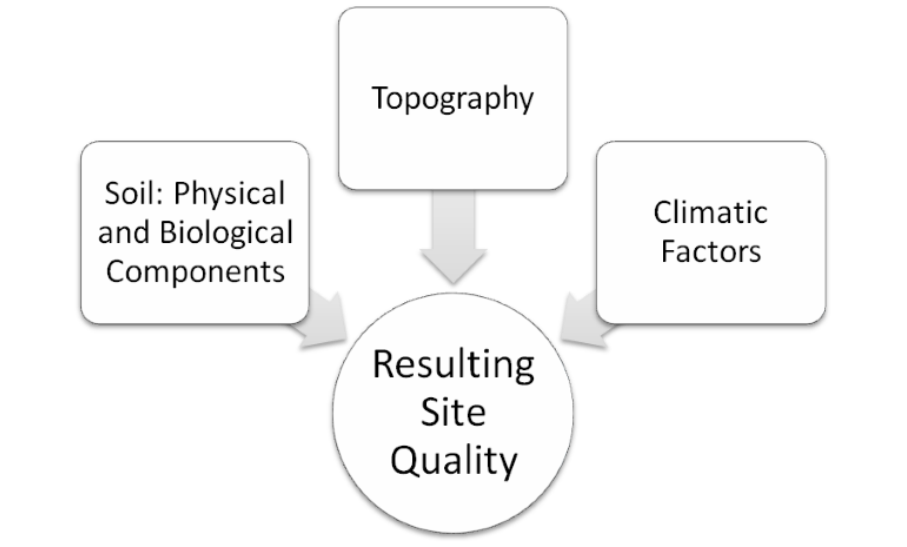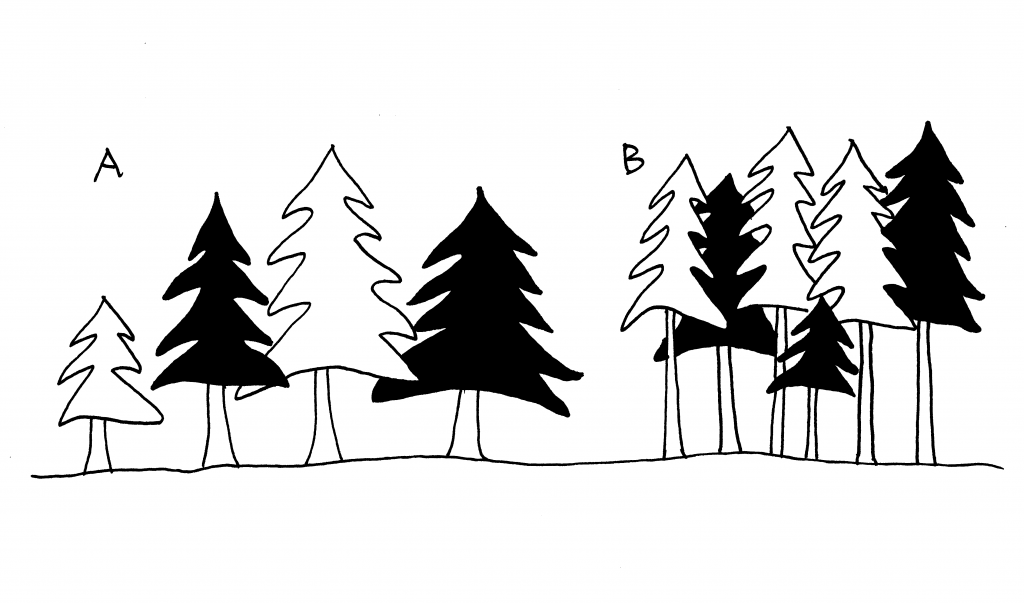35 6.1 Forest Site Productivity
Just as farmers might wish to know how “good” their ground might be for various crops, so foresters wish to know how “good” their forestland is. Since forests are dominated by trees, this generally translates to predicting how well trees will grow. Decisions about what species to grow, how intensely to manage the trees, or whether or not trees are the best crop for a particular piece of ground, are all tied to how plants grow on a site. For example, temperatures may dictate a shift from Douglas-fir to noble fir (Abies procera) once a certain elevation is reached. Trees growing on a very productive site may be thinned more frequently over a rotation than trees growing on a less productive site. Marginal pine forestland may be more suitably managed for wildlife habitat than for timber.
Site quality refers to the inherent ability of a forest to produce biomass; that is, grow trees. It is the composite expression of a variety of physical and chemical attributes of a forested area, including its soil, topography and climate. Site characteristics such as:
- soil depth, texture, and fertility;
- slope, aspect, and elevation; and
- precipitation, temperature and length of growing season;
all combine to influence how well trees grow (Figure 6.1).

Note: many people use the terms site quality and site productivity interchangeably. Purists, however, prefer “site quality” as a baseline indicator, as the productivity of a site can be altered by fertilizing, irrigating, mulching or altering the soil makeup.
To obtain a measure of site quality, one might first think of examining these site variables and correlating them to tree growth. There have been some attempts at doing just that, but the amount of work and expense required to get meaningful data are generally too great for the range of conditions found in most forest ownerships.
Intuitively, if one is interested in tree growth, then one solution is simply to measure how trees grow on a site. When measuring the trees, correlations are not required; the summation of all variables that influence tree growth is expressed in the biomass itself. The “proof is in the pudding” so to speak. And although the causal reasons for the productivity are not identified, as would be the case if all the influential variables were measured, a reliable indicator for tree growth on the site can be obtained. The question then becomes, “What is the best way to measure tree growth?”
Many measurable tree growth attributes are strongly influenced by stand density. If few trees are present on a site, the individual trees will have large crowns, and thus large diameters and wide growth rings. Conversely, trees of the same age in a denser stand will have narrower crowns, smaller diameters, and tighter growth rings (Figure 6.2).

Since tree volume is a function of tree diameter and height, volume is also tied directly to stand density. Therefore, diameter, crown volume, tree volume or tree ring growth do not make good measures of overall forest productivity. Average tree height, on the other hand, is not confounded in this manner except at extreme densities. Tree height is relatively independent of tree density for most forest tree species. Simply put, trees grow taller on good sites, and they grow shorter on poor sites. Therefore, tree height is a more reliable measure of the site’s inherent productivity than most other measures. It is also a quick and easy measurement to take in the field, unlike parameters such as soil fertility or microclimate.

